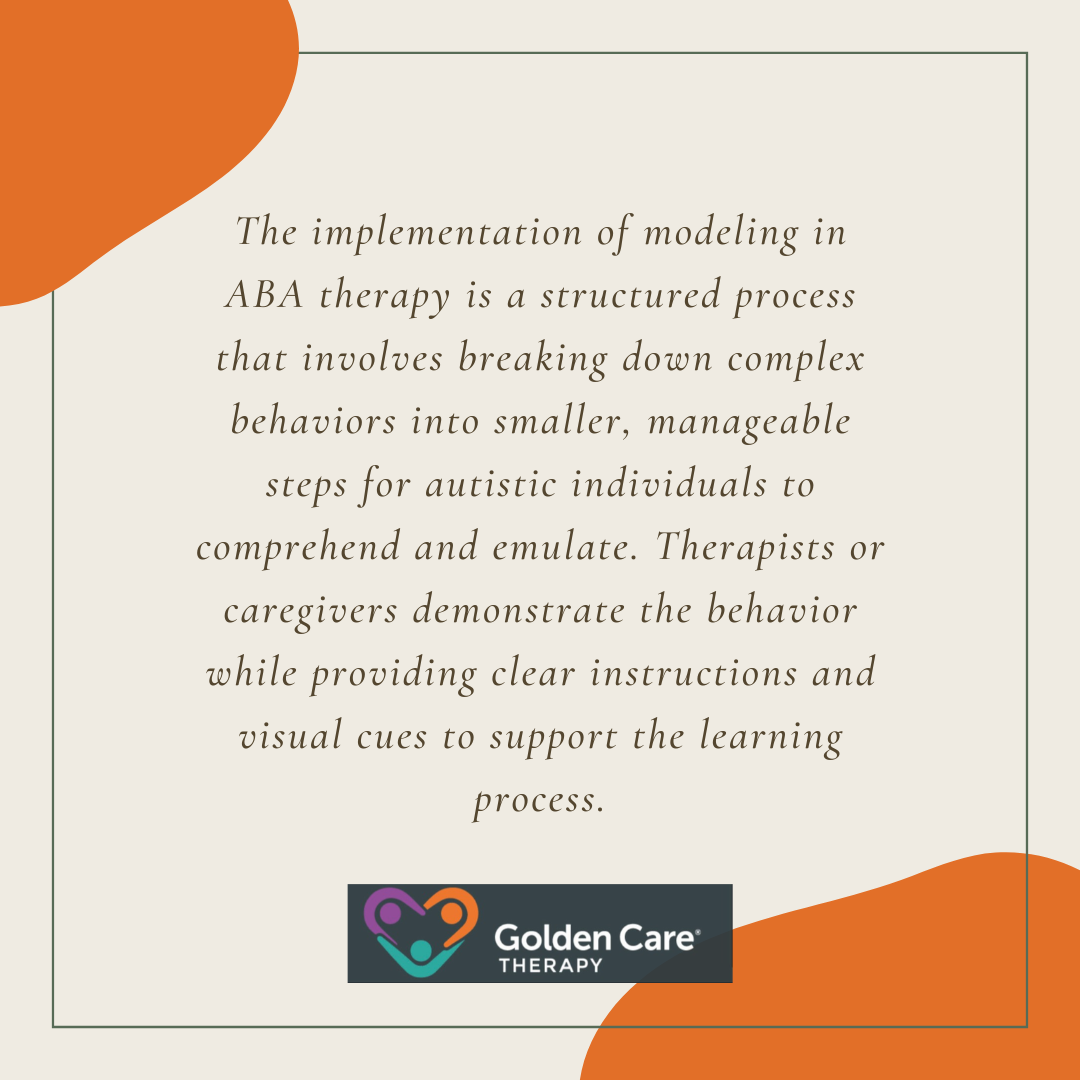
Table of Contents
Modeling is a powerful teaching tool in ABA therapy that helps individuals learn new skills by watching others. It’s a natural way of learning that we all use in everyday life, but in ABA therapy, it is used in a structured way to support behavioral growth.
When someone sees a task being done, it’s easier for them to understand how to do it themselves. This approach can be especially helpful for those who find verbal instructions challenging.
Here, we’ll take a look at the role and importance of modeling in ABA therapy. Let’s get started.
The Role of Modeling in ABA Therapy
In ABA therapy, modeling plays a pivotal role in shaping behaviors and fostering skill development in individuals with autism.
Modeling in ABA therapy involves demonstrating a desired behavior or skill for an individual to observe and imitate. This technique serves as a visual aid for individuals with autism to learn new behaviors, communication skills, and social interactions by observing and replicating the actions modeled for them.

Through consistent modeling and reinforcement, individuals with autism can acquire and generalize new skills across various settings and situations. The goal of modeling in ABA therapy is to promote independence, enhance social functioning, and improve the overall quality of life for individuals with autism.
Through the use of modeling techniques in ABA therapy sessions and daily routines, individuals with autism can enhance their learning, communication, and socialization skills, fostering growth and progress in their developmental journey.
Benefits of Modeling in ABA for Individuals with Autism
Through the practice of modeling ABA, individuals with autism can develop essential skills and enhance their socialization and communication abilities.
Modeling ABA serves as a powerful tool for individuals with autism to learn and acquire new skills. By observing and imitating modeled behaviors, individuals can grasp complex concepts and behaviors that may otherwise be challenging to comprehend.
This method of learning through observation and imitation can help individuals with autism acquire a wide range of skills, from basic daily routines to more advanced social interactions.
Another key benefit of modeling is the improvement in socialization and communication skills. Through modeling positive social behaviors and effective communication techniques, individuals with autism can enhance their ability to interact with others in various social settings.
This can lead to increased confidence, improved relationships, and a better understanding of social cues.
Incorporating modeling into ABA therapy sessions and daily activities can help individuals with autism navigate social situations more effectively and develop strong communication skills essential for interacting with peers, family members, and the broader community.
How to Incorporate Modeling into Daily Routine
Implementing modeling techniques into the daily routine of autistic individuals plays a crucial role in supporting them. By utilizing practical strategies for modeling ABA and customizing techniques to meet individual needs, caregivers and therapists can enhance the effectiveness of therapy sessions.
One effective strategy for utilizing modeling is through the use of video modeling. This involves recording video demonstrations of target behaviors or skills, which individuals can watch and imitate. Video modeling can help individuals visualize and comprehend the desired behavior more clearly, making it easier for them to replicate.
Another practical strategy is peer modeling, where individuals observe and mimic the behaviors of their peers who exhibit the desired skills. This social interaction can foster a sense of connection and motivation, promoting learning and skill development in a natural setting.
When incorporating modeling into daily routines, it’s essential to tailor the techniques to suit the unique needs and preferences of each individual with autism. Personalizing the modeling approach can enhance engagement and learning outcomes, leading to more significant progress in therapy.
One way to customize modeling techniques is by considering the individual’s strengths, interests, and learning style. By aligning the modeling activities with the individual’s preferences, caregivers and therapists can create a more engaging and effective learning experience.
Additionally, adapting the pace and complexity of the modeled behaviors to match the individual’s current skill level can help facilitate successful learning.
Breaking down complex behaviors into smaller, manageable steps and providing opportunities for practice and reinforcement can support skill acquisition and mastery.

Challenges During the Modeling Process
That said, certain challenges may arise during the modeling process. Addressing these challenges effectively and employing appropriate strategies to overcome barriers are vital to the success of the therapy program.
One of the primary challenges in implementing modeling in ABA is individual variability in response to modeling techniques.
Each person with autism has unique needs and learning styles, making it crucial to tailor the modeling approach to suit their specific requirements. Understanding and adapting to these individual differences is key to achieving effective outcomes in therapy.
Another common challenge is the need for consistent implementation of modeling techniques. Maintaining consistency in modeling strategies across different settings and caregivers can be difficult but is essential for reinforcing learned behaviors.
Ensuring proper training and ongoing support for caregivers and therapists is imperative to minimize inconsistencies and maximize the benefits of modeling.
The Bottom Line
Long story short, modeling in ABA therapy is a powerful tool that helps children with autism learn new skills by observing and copying. It’s a fun and effective way to encourage positive behavior and build independence. By making learning visual and interactive, modeling opens up new possibilities for growth and success in everyday life.
Embracing this method can make a big difference in helping children reach their full potential. For families seeking ABA therapy in New York, Georgia, New Jersey, and Indiana, the right support can be life-changing. To learn more about how Golden Care Therapy can assist your child, contact us today and take the first step toward personalized care.
Sources:
- Video Modeling and Its Impact on ABA Learning - September 27, 2024
- Strategies for Teaching Turn-Taking in Autism - September 27, 2024
- Understanding Social Boundaries in Autism - September 27, 2024
